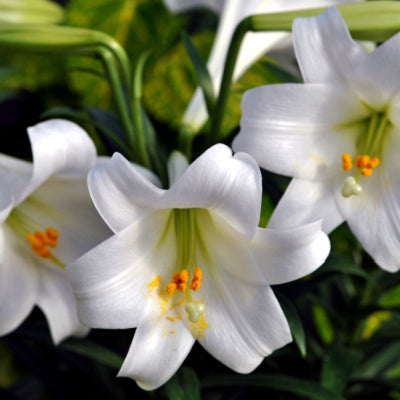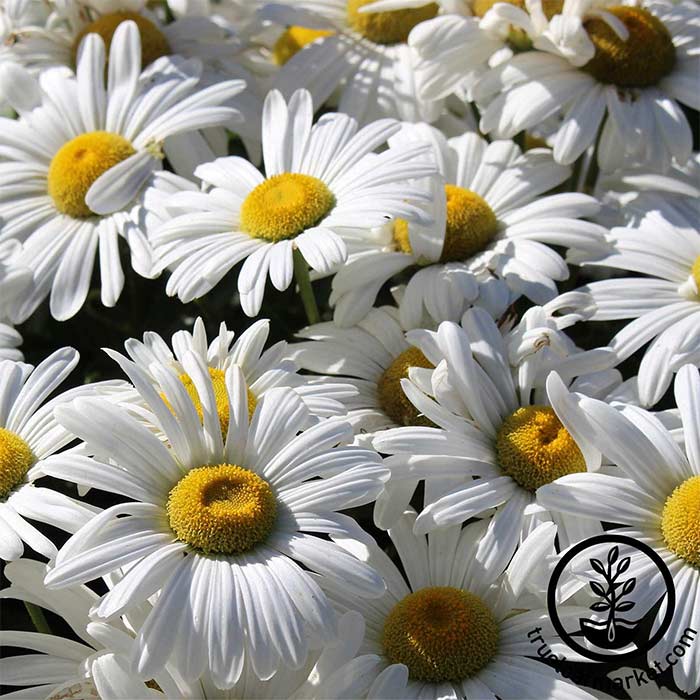
Ashleigh Smith

The Easter lily is most popularly associated with the Christian celebration of the resurrection of Jesus Christ, but it is also related to many other cultural and religious beliefs and customs. For example, pagans connect the Easter lily with motherhood and gratitude. Since Victorian times, the lily has been included in floral arrangements as a symbol of purity, hope, and new beginnings. In literature, it also serves as a representation of purity, transformation, and rebirth. These themes have continued to our modern-day celebrations as the Easter lily is often a central item of decor for those who celebrate Easter or the arrival of spring.
As for the origins of the flower itself, the Easter lily (Lilium longiflorum) is native to Japan. From there, it became popularly cultivated throughout Japan, China, and nearby countries. During the 19th century, its popularity grew throughout Europe and America. During World War II supply was cut off of these special blooms. This kickstarted production within the United States along the western coast. California and Oregon have since become known as the “Easter Lily Capital of the World.”
While the Easter lily can be grown from seed, bulb, or cutting, bulbs are the easiest and most popular method. In order to have an Easter lily in bloom for the holiday, it must be forced. Forcing is the process of careful timing and conditioning to force the bulbs to grow and bloom at a desired time. For the bulbs to sprout, they need a period of cold (vernalization), which lasts 6-8 weeks. This triggers bud development within the bulb. Once planted, temperature, light, and humidity are carefully monitored. As the date of Easter can vary from year to year, it is important for growers to plan ahead, select good bulbs, and monitor growing conditions carefully. Without forcing, Easter lily bulbs will typically bloom throughout June and July.
How to Plant and Care for Easter Lilies
- Hardy in Zones 5-11
- Perennial
- Full Sun
- Summer Blooming
- Height: 3 feet
- Plant Spacing: 12-18 inches
- Bulb Depth: 3 inches

Maintenance - Deadhead spent blooms throughout the season. When the plant has died back in the fall, cut it to the soil level.
Transplanting - Because Easter lilies are often sold as tender plants, it is important to harden off before transplanting. This simply means they need to be adjusted to outdoor conditions gradually before planting. Set them outside for increasing amounts of time over the period of 1-2 weeks. Then, amend the soil with some bone meal and transplant after your last spring frost date. Be careful not to bury the stem deeper than it was in the pot.
Other Flowers With Similar Meanings
About the Author

I'm Ashleigh Smith, a native to Northern Utah. I first gained a love of gardening with my grandmother as I helped her each summer. I decided to make a career of it and have recently graduated with a Bachelor's degree in Horticulture from Brigham Young University - Idaho. My studies have focused on plant production while I also have experience in Nursery & Garden Center Operations.
Our Recommended Picks
Leave a comment
Your email address will not be published. Required fields are marked *
1 comments
Dimitris
You are very good
Further Reading

November Gardening Guide: 5 Tasks to Prepare Your Garden for Winter
Written By Lara Wadsworth November is a key transitional month in the garden. Most zones are gathering in their last rounds of harvests, but the entire garden isn’t quite dormant yet. Even if the frost has arrived in your growing location, there’s stil...

Ashleigh Smith
2025-11-036 min read0
How to Choose the Right Tobacco Seed Variety for Your Garden
Selecting the right tobacco seed variety can make or break your growing season. For experienced gardeners, this choice isn’t just about aesthetics—it’s about matching your growing environment and goals with the perfect plant genetics. Whether you’re gr...

Ashleigh Smith
2025-10-294 min read0
Everything You Need to Know About Tobacco Seeds
Growing tobacco seeds is an art form for seasoned home gardeners. Whether you’re intrigued by the plant’s ornamental qualities, want to harvest for fresh processing, are curious about heirloom varieties, or simply love the challenge of nurturing delica...

Ashleigh Smith
2025-10-297 min read0
Mild Climate Winter Gardening Guide for Zones 9 & 10: What to Plant and When
Coming soon!

Ashleigh Smith
2025-10-171 min read0







